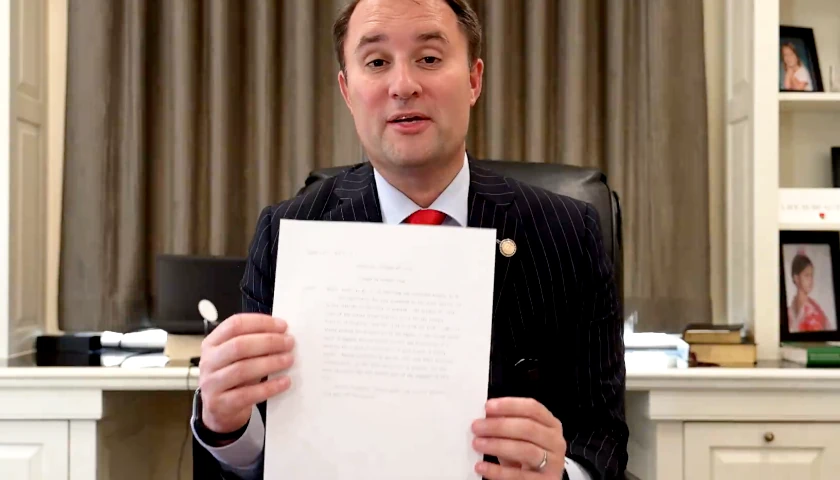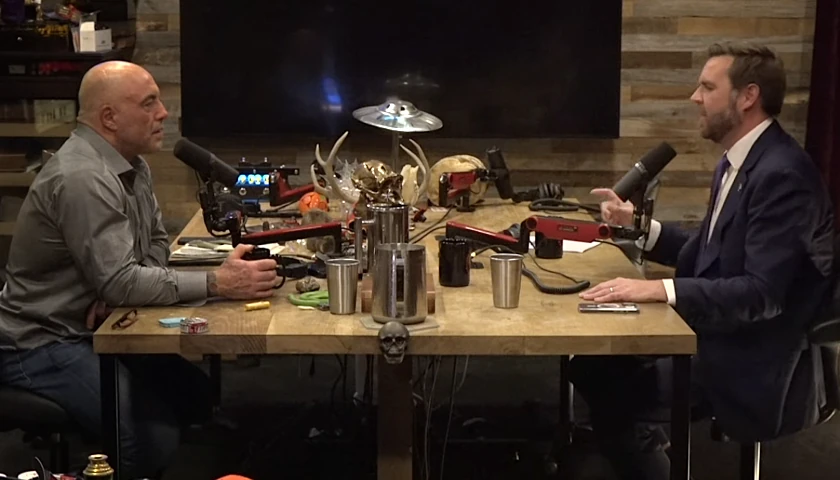The Phoenix Police Department (PPD) released redacted documents this week that show the DOJ left out relevant information to the incidents discussed in a June DOJ report critical of the agency.
Based on the descriptions, PPD was able to discern 120 of the 132 incidents. PPD said it provided roughly 179,000 documents and 22,000 body cam videos to the DOJ during its investigation. The types of incidents covered were the use of force, homelessness, discriminatory policing, protected speech, behavioral health youth, and contributing causes.
Many of the incidents criticized officers’ behavior but often failed to reveal that the same officer was responsible for them. Law enforcement leaders often point out that when an officer commits serious misbehavior, it is a rogue officer and not representative of the entire agency.
Many incidents were thoroughly investigated, and disciplinary actions were taken, but the report failed to mention most of the disciplinary actions. Some of the descriptions by the DOJ contradicted the reports from PPD.
In an incident labeled D02, the DOJ reported that an officer held a black family, including a pregnant mother, at gunpoint because their 4-year-old daughter stole a doll. The incident made national headlines and the family filed a lawsuit, resulting in a $475,000 settlement. Phoenix Mayor Kate Gallego and then-Chief of Police Jeri Wiliams, who is black, issued public policies and held a town hall addressing systemic racism.
However, the report left out many details. The officers pursued the family as a felony flight risk. The internal investigation said, “the store manager (civilian witness Brandon Richkas) pointed at individuals who had just left the store and said they were seen taking ‘a bunch of stuff’ without paying for it and getting into a vehicle driven by a male (Mr. Ames). … After reaching the exit, an item (later determined to be a pair of underwear from the Family Dollar) was thrown out the driver’s window.”
The investigative report continued, “PSB investigators reviewed the Family Dollar surveillance footage, which clearly shows: Mr. Ames removing an item from its packaging, a female who came in with them (Ms. Renita Biscoe) concealing an unknown item in her purse, Ms. Harper giving her old daughter a box containing a doll, and then shortly after, the entire group walking out of the store without paying for the items.”
The DOJ report said the officers used profanity directed at the family but did not reveal that the mother was “yelling and cursing” at them, too. Nor did the report reveal that an eyewitness said the family refused to open their car doors for about 10 minutes. When one of the officers asked the man, “Let me see your hands,” instead, the man “reached back to the inside of the vehicle with both hands and turned back around ‘really fast.’”
The officer explained that he drew his weapon at that point “because he was afraid that Mr. Ames or the person in the back seat was going to produce a weapon.” The officer said the man continued not to show his hands for a while longer.
One of the officers said the mother refused to put her hands up, stating it was because she had children in the car. He said she “started yelling she was not going to put her ‘f****** hands up,’ and she has ‘a f****** baby’ in the car.” When she finally got out of the car, and an officer asked her to put the young child down, she refused.
The DOJ report failed to state that one of the officers was found by internal affairs to have violated seven policies and was suspended for 240 hours. Another officer was found to have violated one policy and received a written reprimand.
In incident U03, DOJ faulted an officer for allegedly shooting a suspect after he was down. “An officer fired one shot at the man as he ran away from them, causing the man to fall,” the report said. “After pausing for a second, the officer fired a second shot at the man as he lay on the ground. The officer’s decision to shoot again was unreasonable.”
However, nothing in the incident report or the internal investigation, which found no wrongdoing, stated that the officer shot the suspect after he was on the ground. The body cam video (at approximately 4:30) showed the officer making two rapid shots at the suspect — the suspect started falling after the first shot, so it wasn’t clear that by the time the officer fired the second shot, he was certain the suspect, who had a knife and wouldn’t release it and was headed towards a moving vehicle merely feet away — had stopped.
The suspect did not suffer life-threatening injuries. The officer said in his report and to internal affairs that he aimed for the suspect’s abdomen and buttocks, not vital areas. The DOJ report didn’t mention either of those.
In incident U01, an officer was accused of an “unreasonable” shooting where he shot a suicidal man who appeared to be threatening him and another officer. The report admitted that the man pulled a knife as officers approached him, said he wanted to die, and when they threatened to shoot him if he didn’t drop the knife, he took two steps toward them. The report also acknowledged that one of the officers attempted to use a Taser first, which was ineffective.
The report failed to reveal that the officer was required to take additional training in de-escalation communication scenarios after the shooting.
The DOJ report criticized PPD employees in incident C17 for making posts on social media “celebrating violence against protesters.” The report only cited one post, where “the message ‘Mace in yo face’ appeared with an image of a police officer spraying pepper spray into a man’s face as another officer looked on.” It failed to state that the officer was disciplined, receiving a suspension from eight to 24 hours in 2019.
In incident H07, an officer was criticized for an “unlawful stop” that resulted in the use of force. The incident report said a homeless man was trying to panhandle two female customers leaving a Quik Trip, so the officers confronted him about trespassing since that location had a problem with panhandlers. The officers also said they believed the man was likely to solicit prostitution and sell or purchase drugs. The incident report said when the officers attempted to ask the man his name, he backed away and appeared to be preparing to run. The officers attempted to arrest him, but he resisted and appeared to be reaching for a weapon so one tased him. They found a knife and a broken piece of glass on him.
The DOJ report did not include all of those details. It did not reveal that both a review and an internal investigation found in 2021 that the officer should not have arrested the homeless person. He was put on 24-hour suspension.
In incident, P04, the DOJ failed to point out that incidents P07, P08, P10, P22, and P23 were also all part of the same incident. The report never mentioned that the incident involved dealing with Antifa rioting after the death of George Floyd. After ABC-15 ran a series of articles criticizing law enforcement over their response, the Maricopa County Attorney’s Office backtracked on prosecuting Antifa and fired the leading prosecutor, longtime prosecutor April Sponsel.
PPD didn’t initially investigate the incident since there was no concern at the time about improper actions. Sponsel was suspended from practicing law for two years by a disciplinary judge. However, the State Bar of Arizona’s disciplinary counsel acknowledged that the protesters marched in the middle of the streets, moved traffic barricades into the street, carried umbrellas to shield their behavior, deployed at least two smoke bombs, and flashed lights at the police. One carried firearms. Officers ordered them to disperse, and 18 of them were arrested when they refused. The DOJ report contained almost none of that information.
– – –
Rachel Alexander is a reporter at The Arizona Sun Times and The Star News Network. Follow Rachel on Twitter / X. Email tips to [email protected].
Photo “Phoenix Police Department Officer” by Phoenix Police Department.









